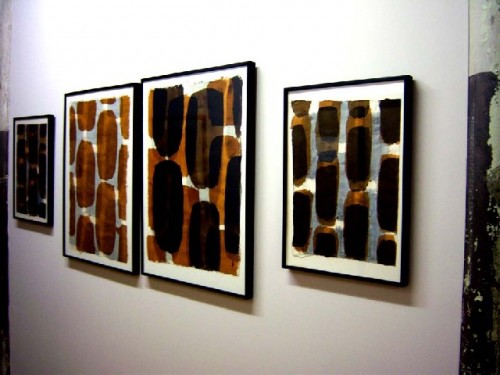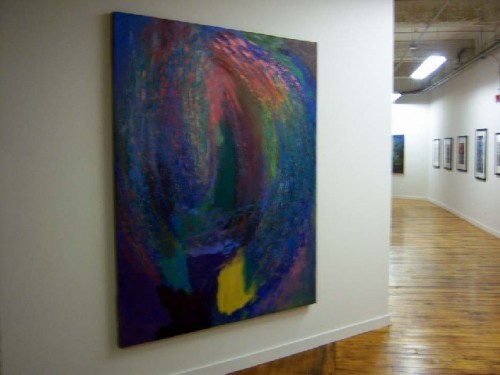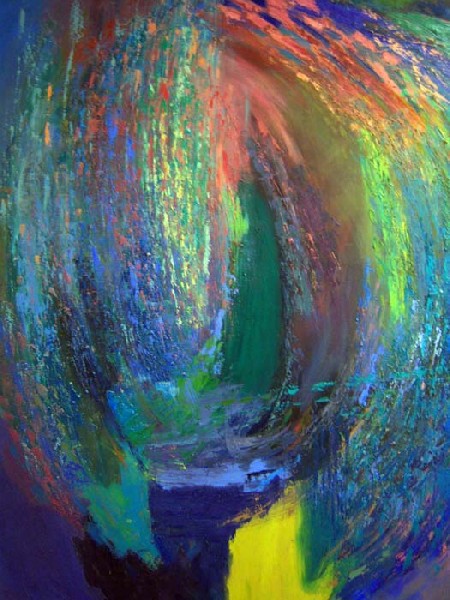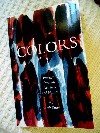'COLORS' by Sarah Sutro
Reflections on Planet Earth and Art
By: Astrid Hiemer - Jul 04, 2011
‘COLORS’ ~ Passages through Art, Asia and Nature ~ by Sarah Sutro was published in 2010 ~ 129 pages.
ISBN: 9781456373337 ~ Publisher, Blue Asia Press, North Adams, MA.
Please order under 'Sarah Sutro' from: www.amazon.com ~ price: $ 12.99
Sarah Sutro’s friends had urged her over time to write and publish a book about her life. Easier said than done! Sutro, her husband Michael Bedford and son Will, have led an adventurous life in different parts of the US and, from our perspective, an exotic life in Asia during a nearly ten year span. Bangladesh is featured extensively and the family has also lived in Thailand, traveled in Laos, Vietnam, Cambodia, Indonesia and Malaysia.
Hands on - was our motto, when we recently attempted an experiment to dye cotton cloth with African tea leaves, which I had in my cupboards. The herbal tea can leave strong orange stains in a cup, so we assumed that it would be a good dye for cloth as well. Several chapters of COLORS are about inks and dyes, which the earth provides on every continent and people have used plants and flowers to extract colors for millennia.
Sutro writes about attending a workshop in Dhaka, Bangladesh, at Aranya (namely, forest in Bangla), a shop and organization, which has been working hard since the 1990s to bring back indigo growing and the trade to Bangladesh. At Aranya the teaching focus is on dyeing cloth and yarn and Sutro provided complete information in the book about the nine steps of dyeing. As a painter, however, she became more interested in making inks for her paintings and has done so, since living in Bangladesh.
In a chapter titled, ‘The Mirror of Indigo’ Sutro quotes: ‘The entire indigo industry of Lower Bengal ultimately rested on a foundation of coercion and intimidation.’ The chapter reveals the ills and brutality of British colonization in Asia and the greed of managers and companies involved in the trade. Industrialization destroyed the indigo harvest there as well as in the Americas, and ‘Planting Blue Gold’ traces the indigo plant globally. The brilliant blue of indigo is attractively used in so many ways and can be as mesmerizing as an Yves Klein Blue painting.
Sutro has been a painter for more than thirty years, using oils for two decades. Since she has had a serious bout with breast cancer, she stopped using caustic oil colors. She painted big, expressive and bold abstract canvases. Then, inks have become a substitute in her work. Sutro writes about the year while living with cancer in a subtle way. In fact, the book mirrors the soft spoken Sarah in beautiful details. Life experiences nudge us all to make adjustments !
The photos, representing her ink works on front and back covers of the book are done with indigo and brown inks in surprising layers and shades, beautiful and intimate.
Sutro traces her own earth-bound connections since childhood to summers on a farm, where the family used to vacation. Months on Ossawba Island in Georgia, changed her life and work some thirty years ago. There are chapters about plants, herbs and fruits she and the family have planted or encountered in the US and in Asia: Thyme, bay leaves, durien and jackfruit, eucalyptus, curry, borage, mint, peppers, teas and more. The scents and smells are burnt into the pages! Sarah has lived in cities much of her life, but has always searched to integrate the natural world around her.
The book is divided into two parts, with many short chapters, some only a few pages long, and can surely be read in increments. Many sections stand alone. It is an inward looking account of a woman’s life experiences, valuable information and descriptions. She offers her intimate thought processes about her work as a painter, while evolving over time. Sutro has read extensively on every subject matter in her book and has added a sizable bibliography.
The pieces of white cotton cloth we dyed as an experiment, turned out in a soft grayish-brown after an hour submerged in the dye. We had added white vinegar as a mordant. The remaining cotton pieces have taken on a warm light brown color after resting in the solution over night.
Sarah notes, that the dyeing process takes its time and cannot be rushed, which is so contrary to our current life style. To read her book, one should take time and let her words, knowledge and wisdom take on color – like cloth submerged in a dye solution.





